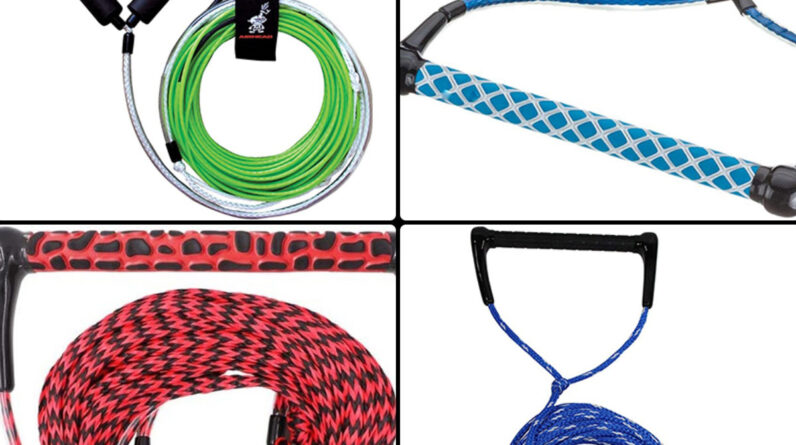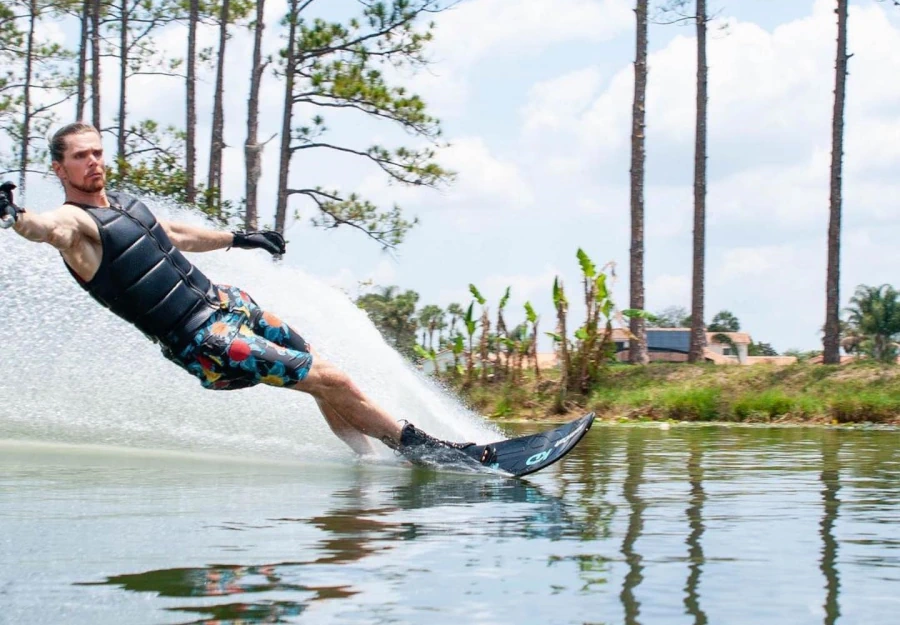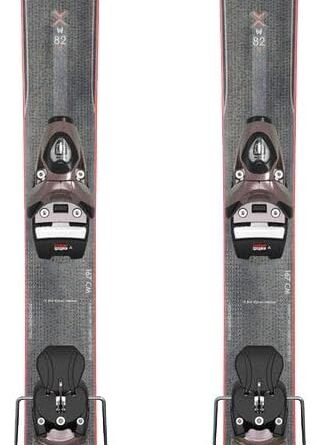
Are you an avid slalom skier looking to compete at your best? Then look no further! In this comprehensive guide, we will walk you through the process of selecting the perfect water ski rope for your slalom skiing competitions. From understanding the importance of size and style to making informed decisions, we’ve got you covered. Strap in and get ready to elevate your slalom skiing experience!
A Guide to Choosing the Perfect Water Ski Rope for Slalom Skiing Competitions

This image is property of www.tallingtonlakesproshop.com.
1. Length of the Rope
1.1. General Guidelines for Length
When it comes to slalom skiing, the length of the rope plays a crucial role in determining your performance on the water. The general guidelines for selecting the right rope length are largely determined by factors such as your skiing ability, boat speed, and skiing style. It is important to choose a rope that allows you to maintain proper body position and control while navigating through the slalom course.
1.2. Ski Rope Length for Slalom Skiing
For slalom skiing, the ideal rope length is typically around 75 to 82 feet, depending on various factors. Advanced skiers or those who ski at higher boat speeds may prefer a shorter rope length to allow for quicker turns and tighter cuts. On the other hand, beginner or intermediate skiers may find it more comfortable to ski with a slightly longer rope to provide a wider turning radius and more stability.
2. Material of the Rope
2.1. Types of Materials for Ski Ropes
Ski ropes can be made from different materials, each offering its own set of advantages and disadvantages. The most commonly used materials for ski ropes include polypropylene, spectra, and dyneema. Polypropylene is a popular choice due to its affordability and decent strength. Spectra, on the other hand, is known for its high strength and low stretch properties. Dyneema is another material widely used, offering excellent strength and minimal stretch.
2.2. Choosing the Right Material for Slalom Skiing
When it comes to slalom skiing, it is crucial to choose a rope made from a high-quality material that is both durable and provides the desired performance characteristics. Spectra and dyneema ropes are often favored by competitive slalom skiers due to their high strength and low stretch properties. These materials allow for quick and precise movements, enhancing your ability to make sharp turns and cuts through the course.
3. Diameter of the Rope
3.1. Importance of Diameter in Slalom Skiing
The diameter of the ski rope plays a crucial role in determining its durability, strength, and usability. A thicker rope tends to be stronger and more durable, but it may be less responsive, making it challenging to control and maneuver. On the other hand, a thinner rope offers greater responsiveness and maneuverability but may compromise on strength and durability.
3.2. Recommended Diameter for Slalom Skiing
For slalom skiing, a rope diameter of 8 to 12 mm is generally recommended. Skiers looking for increased durability and strength may opt for slightly thicker ropes, while those prioritizing responsiveness and maneuverability may prefer thinner ropes. It is important to strike a balance between diameter and performance, considering your skill level and personal preferences.
4. Stretch Properties
4.1. Elastic vs. Non-Elastic Ropes
Stretch properties of the rope can significantly impact your slalom skiing experience. Elastic ropes, often made from materials like double-braided nylon, provide a certain amount of give or stretch, reducing the impact on your body during turns and jumps. Non-elastic ropes, such as spectra and dyneema, offer minimal stretch and provide a more direct transfer of energy, resulting in better control and responsiveness.
4.2. Ideal Stretch Properties for Slalom Skiing
In slalom skiing, the ideal stretch properties depend on your skiing style and personal preferences. Skiers who prefer a more forgiving and comfortable ride may opt for an elastic rope with moderate stretch. On the other hand, skiers aiming for maximum control and responsiveness may prefer a non-elastic rope with minimal or no stretch.

This image is property of www.tallingtonlakesproshop.com.
5. Handle Design
5.1. Considerations for Handle Design
The handle is an essential component of a ski rope, as it is the connection point between you and the rope. When choosing a handle for slalom skiing, there are a few key considerations to keep in mind. First, the handle should have a comfortable grip that allows for a secure hold during sharp turns and maneuvers. Second, the handle should be durable and able to withstand the rigors of slalom skiing. Finally, the handle design should be ergonomic, promoting proper hand positioning and minimizing the risk of injury.
5.2. Choosing the Right Handle for Slalom Skiing
There are various handle designs available, including T-bar, straight-bar, and ergonomically shaped handles. The choice ultimately depends on personal preference, with some skiers finding certain handle designs more comfortable or conducive to their skiing style. It is important to try out different handle designs to find the one that feels the most natural and allows for optimal performance on the water.
6. Grip and Texture
6.1. Factors to Consider for Grip and Texture
The grip and texture of the handle play a significant role in maintaining a secure hold and control over the rope. A handle with a textured surface or grip pattern helps to prevent slipping, even when wet. The material used for the grip should be durable, providing a long-lasting and reliable grip in various weather conditions and water temperatures.
6.2. Best Grip and Texture for Slalom Skiing
For slalom skiing, handles with a firm yet comfortable grip are preferred. They should offer sufficient texture or patterns that enhance grip and prevent slipping. Some handles are designed with specialized materials that provide extra traction and grip, ensuring a solid hold even during aggressive turns and maneuvers.

This image is property of www.momjunction.com.
7. Handle Length
7.1. General Guidelines for Handle Length
The handle length plays a crucial role in maintaining proper body position and control while skiing. When selecting a handle length, it is important to consider your skiing ability, boat speed, and personal preferences. A shorter handle may offer greater control and maneuverability, while a longer handle provides more stability and allows for smoother turns.
7.2. Handle Length for Slalom Skiing
For slalom skiing, handle lengths typically range from 10 to 13 inches. Advanced skiers or those skiing at higher boat speeds may prefer a shorter handle, as it allows for quick and precise movements. Intermediate or beginner skiers may find a slightly longer handle more comfortable, as it provides a wider turning radius and greater stability.
8. Weight of the Rope
8.1. Impact of Rope Weight on Performance
The weight of the ski rope can influence your performance on the water, particularly during slalom skiing. A lighter rope may offer greater responsiveness and maneuverability, allowing for quick turns and cuts through the course. Conversely, a heavier rope may provide more stability but can be less responsive to your movements.
8.2. Recommended Weight for Slalom Skiing
For slalom skiing, the recommended weight of the ski rope depends on your personal preferences and skiing style. Some skiers may prefer a lightweight rope for enhanced maneuverability and responsiveness, while others may prioritize stability and opt for a slightly heavier rope. It is important to find a weight that strikes a balance between performance and comfort for your optimal slalom skiing experience.

This image is property of www.discoverboating.com.
9. Durability and Strength
9.1. Key Factors for Durability and Strength
Durability and strength are fundamental considerations when choosing a ski rope for slalom skiing. The rope should be able to withstand the stresses and strains of sharp turns, high boat speeds, and frequent use. Factors such as the material of the rope, construction quality, and overall design play a crucial role in determining the durability and strength of the rope.
9.2. Optimal Durability and Strength for Slalom Skiing
For competitive slalom skiing, it is important to invest in a high-quality ski rope that offers optimal durability and strength. Ropes made from materials like spectra and dyneema are known for their exceptional strength and are commonly used by professional skiers. Additionally, reinforced construction, heavy-duty stitching, and secure connections between the rope and the handle contribute to the overall durability and strength of the rope.
10. Consideration of Official Regulations
10.1. Understanding Official Regulations
When choosing a ski rope for slalom skiing competitions, it is essential to consider the official regulations set by the governing bodies of the sport. These regulations define the allowable specifications for rope length, diameter, and other key factors to maintain fair and competitive conditions for all participants.
10.2. Compliance with Regulations for Slalom Skiing
To ensure compliance with official slalom skiing regulations, it is crucial to carefully review the rules and guidelines provided by the governing bodies. By selecting a ski rope that meets the specified requirements, you can participate in slalom skiing competitions with confidence, knowing that your equipment is both legal and optimized for performance.
In conclusion, choosing the perfect water ski rope for slalom skiing competitions involves considering various factors such as length, material, diameter, stretch properties, handle design, grip and texture, handle length, weight, durability, strength, and compliance with official regulations. By carefully evaluating these aspects and understanding your own skiing style and preferences, you can select a ski rope that enhances your performance and ensures an enjoyable and successful slalom skiing experience. Happy skiing!

This image is property of www.watersportswarehouse.co.za.






